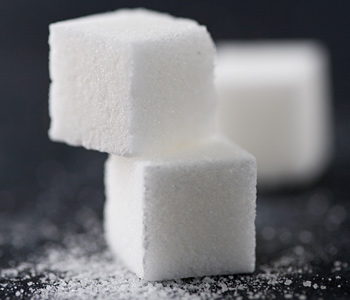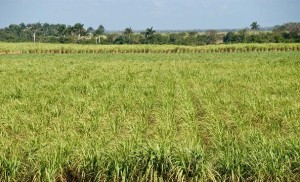A Tankful of Sugar


Remember those toy trucks, the 18-wheelers (tractor-trailers) that gas companies manufactured? If you grew up in the 80’s, and were a boy or had a brother, or just loved trucks, your dad probably bought one for Christmas. My brother and I would build towns out of Lincoln Logs and Legos and we would wait for the weekly delivery of gasoline from my brother’s Amoco truck to our “town’s” gas station so all of our citizens’ Hot Wheels could fuel up and get the people to their jobs and school and weekend camping trips. With our vivid and wild imaginations, we would sometimes fill the trucks with jellybeans and transport them to the sugar processing station for conversion to fuel our miniature economy. While companies may not be mining jellybeans, a few are stretching a farfetched imagination into a new fuel reality. The reality that we can grow a fuel source; a plant-based fuel source that is clean burning, better for the environment in that it releases fewer emissions, and creates a new line of industry within the economy. Shell is one company doing just that; with sugarcane, in Brazil.
What Has Brazil Been Up To?
Brazil has had an ethanol fuel program in place for 37 years. Brazil started Pró-Álcool, (Programa Nacional do Álcool’ (Portuguese), or The National Alcohol Program), its gasoline substitution program, because the oil shocks of the 1970s made oil extremely expensive.
The Brazilian government took what could be considered as drastic action. They strongly subsidized ethanol production, forced gas station owners to offer ethanol in addition to gasoline at their stations, and encouraged automakers to manufacture vehicles that would run solely on ethanol. These cars were popular with the people and things seemed to be rolling smoothly along in the 1980s.
But as we all know how the price of oil bounces like a super ball, oil prices dropped in the 1990s and subsidizing sugarcane ethanol became too costly and the government subsidies screeched to a halt. Ethanol production switched back to sugar production. The crisis was that many people’s automobiles were unusable. What to do?
Choice – The thing that keeps a market moving. The Brazilian government did something novel in that it offered tax breaks to automakers to produce flex-fuel vehicles that gave the consumer a choice between filling up with ethanol or gasoline. The Brazilian people wouldn’t buy an ethanol-only automobile, but they were happy to purchase an automobile that gave them a choice.
And that’s not all, the government mandated a 25 percent blend of ethanol in all gasoline. No where in Brazil, can you find pure gasoline; it’s the 25 percent blend or pure ethanol.
Quick Sugar Facts
- Efficient industrial mills process sugarcane into ethanol in around 12-15 hours.
- Sugarcane must be processed as soon as possible to avoid its sugar content deteriorating. Most cane is delivered within 24 hours of harvesting.
- One tonne of sugarcane produces around 85 liters of ethanol.
- Electricity from bagasse (cane fibre) in the ethanol industry already meets 3% of Brazil’s demand and is expected to increase to 15% by 2020.
Biofuels Reducing Emissions
With the implementation of the Brazilian ethanol policy, CO (carbon monoxide) emissions have significantly been reduced. When gasoline was the only fuel in use, prior to the Pró-Álcool Program, CO emissions were 50 g/km driven. In 1995, CO emissions had been reduced to less than 5.8 g/km driven. To further lower emissions and improves fuel efficiency, flex-fuel engines are designed with higher compression ratios to take advantage of the higher ethanol blends and to maximize the benefits of the higher oxygen content.
Turning sugarcane into ethanol offers significant environmental benefits over other biofuel production processes. As it grows, sugarcane absorbs CO2 (carbon dioxide) at a greater rate than other biofuel crops such as corn, soy or wheat. It increases the carbon sequestration in the soil and the fields where sugarcane is planted and that field becomes a carbon sink.
Blending sustainable biofuels with petrol offers one of the most commercially viable ways to reduce CO2 emissions from transportation fuels. According to UNICA (the Brazilian Sugarcane Industry Association), since 2003, Brazil has avoided over 103 million tonnes of the CO2 that would have been produced had petrol not been replaced. That’s a pretty significant statistic.
Sustainability ISSUES
As with most things that seem really stellar, there are bound to be some not so pleasant issues to confront. But those are the kinds of problems that policy analysts live for. Sure, some of the biofuels present sustainability challenges. We need to think about labour rights, conservation of land management issues, and the concern that biofuels are in direct competition with food crops. Companies and governments must work together to create agreements that includes sustainability principles designed to help overcome these challenges and improve sustainable production as they relate to the specific areas of land, communities and the regions they serve. There’s no mass production blueprint for this. Each city, state, country needs to custom design its own plan. Roll up the sleeves and get to work, World.
Australia’s Sweet Future

When I was visited Tropical North Queensland last winter (Australian summer), I recall seeing large fields of sugarcane as we travelled on the highway. And next to those fields were train tracks. A friend told me they called that the cane train, as it was used to transport sugarcane to the refineries. It seemed like a swell plan. So I’m curious, with all the effort that Shell has been putting into its sugarcane ventures with Raizen in Brazil, does Shell have plans for Australian sugarcane?
Quick Sugar Facts for Australia
- 3rd largest raw sugar supplier in world
- 7th largest agricultural exporter in Australia
- 80% exported
- $1.5 – $2.5 billion value of production
- 32-35 million tonnes cane
- 4.5-5 million tonnes raw sugar
- 4000 cane farm businesses
- 24 sugar mills
- 6 bulk storage ports
Source: Canegrowers, www.canegrowers.com.au
Final Sweet Thoughts
In addition to fueling our cars, could sugarcane also power our homes and offices? As liquefied natural gas is helping to reduce emissions, perhaps liquefied sugarcane (ethanol) will be pumped through electricity grid to run our lights, television sets and coffee makers. I’d say now, that the wild imaginations of childhood (and adulthood) are now on the table as any and all innovations are summoned to help solve the global energy and emissions problem. Who knew my brother and I were on to something back then?
Lesson here is not to follow Brazil’s plan step by step, to the letter; because that is simply not going to work. It’s like in school; you can’t copy off the brainiac and expect to ace the exam. Each country has homework to do. Figure out what is the correct energy mix that will help solve each country’s own environmental emissions problems. That in turn will benefit the global emissions problem. Small individual efforts will add up to the overall change we all so desperately hope for and need.
As Mary Poppins said, “A spoonful of sugar helps the medicine go down.” Maybe a tankful of sugar will help the world go round. In the most delightful way.
 Follow
Follow
1 thought on “A Tankful of Sugar”
Comments are closed.